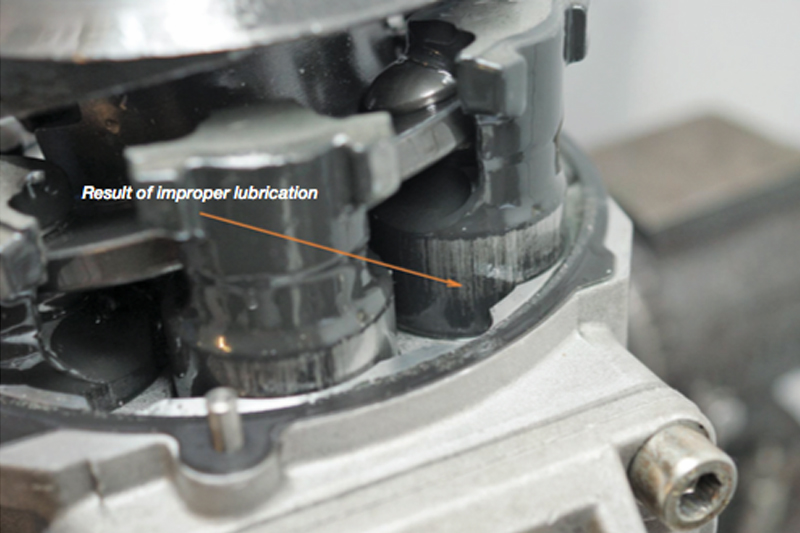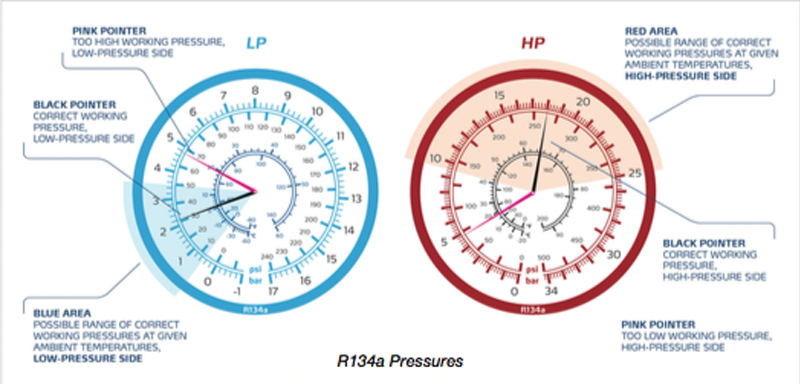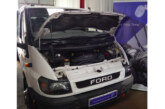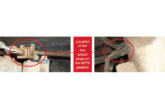
Nissens provides two instances where in-depth, practical know-how can keep technicians on top of complex AC system malfunctions.
In general, to perform properly the AC system must be clinically clean inside the loop. Refrigerant and lubricant working in high temperatures and pressures, as well as components with precise mechanisms (compressor, expansion devices), require cleanliness for optimal operation. Flushing is considered one of the most basic and important service procedures, and is highly recommended by AC experts, as well as the major manufacturers of compressors. Furthermore, flushing is the only way to determine the proper level of lubricant recommended for the given compressor/vehicle model.
Problem
Impurities, refrigerant and oil contaminants, or improper use of additives can quickly cause clogs in the thin system channels, e.g. receiver dryer, condenser tubes, expansion devices, and compressors’ ECV/MCV valves. System stoppages will lead to a decrease in the system’s performance and cause serious pressure increases, and thus an abnormal temperature load on the compressor.
Furthermore, contaminants and moisture affect lubricating characteristics of the oil. Improper lubrication has an instant negative effect on a compressor’s mechanical parts, causing it to seize. In the same way, missing, diluted or improper oil will lead to irreversible compressor failures.
Solution
To avoid performance-related system problems and expensive repeat repairs, flush the system whenever it has been diagnosed with clogs, stoppages, receiver dryer failures, or excessive or improper use of additives, such as UV dye or stop leaks agents. Furthermore, always flush the system before installing a new compressor. Carbonised oil particles, metal chips and other impurities that caused the previous compressor to fail can quickly damage the new unit if the system was not flushed.
Besides that, the only reliable way to determine the proper volume of the lubricant in the system during a service cycle is flushing and filling an empty system with the right type and volume of oil. An appropriate lubrication guarantees vitality and a long lifespan for the compressor, thus ensuring the system’s proper performance.
Keep in mind that the following components should not be flushed: compressor (replace/bypass), expansion devices (bypass), receiver-dryer/desiccant (replace).
Note – in case of any suspicion of stubborn contamination inside the condenser/evaporator after flushing, the components should always be replaced.
Recommended flushing methods
Flushing detergent
The process is performed by means of a special flushing detergent. The detergent is circulated throughout the loop by use of a dedicated flushing machine, or can be injected directly from a pressure container. This flushing method offers excellent cleaning properties, dissolving all sorts of particles, sludge, stubborn soil and residues.
Refrigerant and filling station
System is flushed by means of the R134a refrigerant circulated by the filling station. The station must be equipped with a flushing function, specially designed filters and a container to collect contaminants. A
vacuum must be pulled to dry the system after flushing.
Note – this flushing method effectively cleans loose particles, however it could work ineffectively for rinsing of serious sludge and soils.
Refrigerant directly from the bottle
System is flushed by means of the R134a refrigerant circulated in the loop by heating up the bottle. An additional bottle for contaminated gas is needed, as well as an adapter and hose set, ensuring proper system connection. A vacuum must be pulled to dry the system after flushing.
Note – again, this flushing method effectively cleans loose particles, however it could work ineffectively for rinsing of serious sludge and soils.
AC system diagnostics – operating pressure R134A
The working pressures diagnostics method is an easy and cost effective way to troubleshoot major problems within the AC system operation. The temperature and pressure variations taking place inside the loop and within an AC cycle are crucial for the refrigerant’s change of state, enabling the system to operate and to produce cool air inside the cabin. In terms of pressure operation, the AC loop is divided in two sections – high-pressure side and low-pressure side. Reading the relations between pressures is a reliable and easy way to determine the most common malfunctions of the system or components.

Problem
Operating pressures on the high- and low- pressure sides need to remain within a particular range to ensure optimal performance of the AC system. Having either the LP or HP reading outside of their preferred ranges can mean an array of problems that need to be found and eliminated. Typically, the most common result of various malfunctions is poor performance of the system, meaning that there is not enough cool air delivered to the vehicle’s cabin.
Solution
To perform effective pressure diagnostics, several crucial conditions must be observed. First, use of the right tools – a separate pressure gauges manifold or gauges integrated with a filling station are recommended. LP and HP gauges must be connected correctly to the vehicle’s system, respectively to the low- and high- pressure side’s service ports.
Before the test, make sure the system is in an operational condition. This requires a correct level of refrigerant charge, with at least 1.5 bar/25 psi of static pressure to run the compressor. To determine that, static pressures of the system should be read before starting the engine. LP and HP pressure gauge indications should be very near to equal on both sides (The actual static pressure will depend on the ambient temperature. To control if it is correct, refer to a static pressures table applicable for R134a). Too low static pressure indicates a low system charge and probable leak that must be found and repaired.
After the static pressures test is passed, operational pressures can be measured. For a reliable outcome, the vehicle must achieve its operational characteristics. The engine must get started, set to idling and maximum cold air production, and around 70% of the blow power must be set for the AC system. The engine must get to its proper operational temperature of 80- 90°C/180-200°F.
Now the LP and HP gauge readings need to be considered. To determine failures, the gauges’ indications must be referred to a table with R134a operating pressure values for HP and LP. Please notice, the values will vary depending on conditions such as ambient temperature and compressor type (fixed/variable displacement).
Appropriate operational pressure values, R134a
Typical problems causing the LP/HP operational pressures to register outside the regular values:
■ Improper system charge – too low or too high amount of refrigerant
■ Improper use of additives – mainly excessive use of UV dye causing system overpressure
■ Component and inner system blockages and restrictions – caused by impurities, debris, moisture or corrosion in the system, improper use of additives (leak stop agents), consequence of overheating and carbonised lubricant particles – most exposed to clogs are the expansion valve, receiver-dryer and condenser (thin micro tubes)
■ Malfunction of condenser fan
■ Malfunction of air circulation system – cabin filter, interior blower, heater, thermostatic valve, etc.
■ Malfunction of compressor – steering, clutch/valves, power drive or operation in general
■ Malfunctioning condenser – restricted heat exchange caused by missing fins, fin corrosion, soiled surface, leakages, bent tubes and fins, etc.









